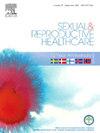Do Indonesian midwifery-led birth units provide safe, accessible care? A secondary analysis of demographic health survey cross-sectional data
IF 1.7
3区 医学
Q3 PUBLIC, ENVIRONMENTAL & OCCUPATIONAL HEALTH
引用次数: 0
Abstract
Objective
In high-income countries, attended birth at home and in midwifery-led birth units is safe for low-risk women who have access to hospital transfer. These circumstances are untested in Indonesia and other low- and middle-income countries, where mortality remains unacceptably high, and studies analysing birth settings do not account for pregnancy risk. This study aimed to quantify first day neonatal mortality in Indonesia across different birth settings, adjusting for pregnancy risk and other confounding factors, and summarise barriers to accessing health care.
Methods
Using self-reported data from women aged 15–49 years participating in the 2007, 2012 and 2017 Indonesian Demographic Health Surveys (n = 45,953), adjusted odds ratios (aOR) of first-day neonatal mortality were estimated using logistic regression. Barriers reported by women in accessing health care are summarised.
Results
First-day neonatal death occurred in 3.45 per 1000 live births. Rates were higher for: births with pregnancy risk (7.35/1000 vs 2.31/1000 no risk; aOR = 3.17, 95 %CI 2.29–4.38); home births with and without health professionals present (5.03/1000, aOR = 2.26, 95 %CI 1.19–4.29 and 5.11/1000, aOR = 2.50, 95 %CI 1.26–4.96 respectively) vs midwife-led birth unit. Women who birthed in hospital and midwifery-led birth units reported fewer barriers to accessing healthcare; those who gave birth at home without a health professional reported the most.
Conclusion
Pregnancy risk and barriers to health care access are key elements associated with neonatal mortality. Interventions should target women who face barriers to accessing healthcare, particularly those with risk factors. Midwifery-led birth units are an accessible option, with low odds of first-day neonatal mortality in Indonesia.
印尼助产单位提供安全、方便的护理吗?人口健康调查横断面数据的二次分析
目的在高收入国家,对于有机会转院的低风险妇女来说,在家和在助产士主导的分娩单位助产是安全的。这些情况在印度尼西亚和其他低收入和中等收入国家尚未得到检验,这些国家的死亡率仍然高得令人无法接受,分析出生环境的研究没有考虑到怀孕风险。该研究旨在量化印度尼西亚不同出生环境下的新生儿第一天死亡率,调整怀孕风险和其他混杂因素,并总结获得医疗保健的障碍。方法使用2007年、2012年和2017年印度尼西亚人口健康调查中15-49岁妇女的自我报告数据(n = 45,953),采用logistic回归估计新生儿第一天死亡率的调整优势比(aOR)。总结了妇女报告的在获得保健方面的障碍。结果新生儿首日死亡率为3.45 / 1000。有妊娠风险的新生儿的比率更高(7.35/1000 vs 2.31/1000无风险;aOR = 3.17, 95% CI 2.29-4.38);有和没有卫生专业人员在场的家庭分娩(分别为5.03/1000,aOR = 2.26, 95% CI 1.19-4.29和5.11/1000,aOR = 2.50, 95% CI 1.26-4.96)与助产士主导的分娩单位。在医院和助产士主导的分娩单位分娩的妇女报告说,获得医疗保健的障碍较少;那些在家中分娩而没有医疗专业人员的人报告最多。结论妊娠风险和获得保健服务的障碍是影响新生儿死亡率的关键因素。干预措施应针对在获得医疗保健方面面临障碍的妇女,特别是具有风险因素的妇女。助产士主导的分娩单位是一种可获得的选择,印度尼西亚新生儿第一天死亡率低。
本文章由计算机程序翻译,如有差异,请以英文原文为准。
求助全文
约1分钟内获得全文
求助全文
来源期刊

Sexual & Reproductive Healthcare
PUBLIC, ENVIRONMENTAL & OCCUPATIONAL HEALTH-
CiteScore
2.70
自引率
5.60%
发文量
73
审稿时长
45 days
 求助内容:
求助内容: 应助结果提醒方式:
应助结果提醒方式:


